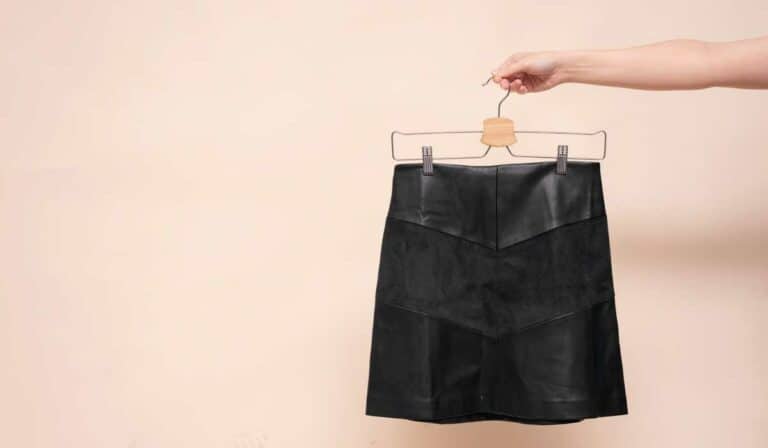Best Hiking Clothes for Hot Weather Adventures
To ensure a comfortable and safe experience, it is important to select the appropriate clothing for hot weather hikes. Exploring the blazing heat can be a daunting task, but with proper clothing, you can make your summer hikes more enjoyable.
In this blog post, we will discuss key aspects of selecting the perfect summer hiking clothes that not only provide comfort but also ensure safety during those hot weather hikes. From lightweight fabrics and loose-fitting clothing to breathable shoes and sun protection essentials – we’ve got you covered.
So let’s dive into our comprehensive guide on choosing the best hiking clothes for hot weather so that you can enjoy nature without compromising your well-being.
Table of Contents
1. Choose Lightweight Fabrics

When it comes to traversing in hot conditions, the fabric you sport can drastically affect your ease. For hot weather hiking, fabrics like cotton, linen and rayon are optimal for keeping cool while still shielding from the sun’s rays. These materials allow air to circulate around your body, helping you stay comfortable during your outdoor adventure.
Cotton: A Natural Choice
Cotton is a popular choice for hot-weather clothing because it’s soft, breathable, and absorbs moisture well. This natural fiber helps wick sweat away from your skin and allows it to evaporate quickly so that you stay dry and comfortable on even the hottest hikes.
Linen: Stay Cool with Style
Linen, another natural fiber made from flax plants, is known for its ability to keep you cool in hot climates thanks to its excellent breathability and moisture-wicking properties. Linen also has a unique texture that adds an element of style while keeping you comfortable on your hike.
Rayon: A Versatile Synthetic Option
If you prefer synthetic materials over natural fibers like cotton or linen, rayon is an excellent option for hot-weather hiking clothes. Rayon is lightweight yet durable and provides good airflow around your body due to its loose weave structure. It’s also quick-drying which makes it perfect for those sweaty summer hikes.
Remember, when choosing the best hiking clothes for hot weather, lightweight fabrics are key to staying cool and comfortable on your outdoor adventure. Pack some garments crafted from fabrics such as cotton, linen, or rayon in your bag before you start your trek.
Lightweight fabrics are essential for keeping you cool and comfortable while hiking in hot weather. When choosing clothing, opt for loose-fitting items that will allow air to circulate around your body and help regulate temperature.
Click here to read about How Many Miles Should You Hike
2. Opt for Loose-Fitting Clothing
Choose clothing that allows air to circulate around your body, promoting a cooler hike. Avoid tight-fitting clothes that can trap heat and make you uncomfortable during your outdoor adventures. Here are some tips on choosing the right loose-fitting attire for a comfortable hike:
- Select moisture-wicking materials: Look for fabrics like polyester or nylon, which wick away sweat from your skin, keeping you dry and preventing chafing. Check out this list of the best moisture-wicking materials for hiking.
- Avoid heavy fabrics: Steer clear of denim or thick cotton materials that can become heavy when wet with sweat.
- Pants vs shorts: While shorts may seem like an obvious choice in hot weather, lightweight pants provide better protection against sunburn, insects, and scratches from plants or rocks along the trail.
- Incorporate ventilation features: Some hiking clothes come with built-in vents to promote airflow; look for these options when shopping.
Besides staying cool on the trails, wearing loose-fitting clothing also provides more freedom of movement while navigating through challenging terrains. So next time you plan a summer hike, remember to opt for breathable and roomy outfits.
Garb that’s not too snug is an ideal way to stay cool and comfy when trekking in the heat. For additional visibility, consider wearing brightly-colored clothing to ensure that you can be easily spotted by others.
3. Wear Bright Colors

To stay cool in hot weather while hiking, opt for bright colors that reflect sunlight rather than darker hues that absorb heat. These shades reflect sunlight and help keep you cooler than darker hues, which tend to absorb heat. Choosing hues like a white, beige, or light blue for your hiking apparel can assist you in combating the sun’s intensity and staying at a pleasant temperature during your trek.
The Science Behind Color Choice
Dark fabrics tend to absorb more sunlight than lighter hues, thereby transforming light into heat energy and consequently making the wearer feel hotter. This means that when you wear dark clothing on a sunny day, it can make you feel hotter as it absorbs more heat from the sun compared to lighter garments.
Tips for Choosing Hiking Clothes with Bright Colors
- Pick pastel shades: Opt for pale tones such as baby blue, mint green, or soft pink instead of bold neon colors that might not provide the same cooling effect.
- Avoid patterns: While patterned clothes can be fun and stylish, they may also contain darker elements that could negate some of the benefits provided by brighter hues. Stick with solid-colored garments whenever possible.
- Mix and match: If all-white outfits aren’t your style or if they’re impractical due to dirt and stains from outdoor activities like hiking, consider mixing different bright colors together – this will still help reflect sunlight effectively without sacrificing fashion sense.
Outfitting yourself with these tips in mind will make sure you’re ready to tackle the heat when going on hikes. By wearing bright colors, you’ll not only stay cooler but also add a touch of fun and flair to your outdoor attire.
Wearing bright colors while hiking in hot weather is a great way to stay cool and visible. The next step in finding the best clothing for hot weather hikes is making sure you have breathable shoes that keep your feet comfortable throughout the day.
Click here to read about Explore Easy Hikes in South Lake Tahoe
4. Wear Breathable Shoes
When it comes to hot weather hikes, breathable shoes are an absolute must-have. In sweltering temperatures, your feet can quickly become hot and clammy; thus, it is essential to pick shoes that permit air to move around your toes and keep them cool during the excursion. To ensure you have the best experience possible, this article will discuss important factors to consider when choosing breathable hiking shoes.
A. Opt for Mesh or Ventilated Materials
The best materials for hot-weather hiking shoes are those that allow maximum airflow while still providing support and protection. Mesh uppers are a popular choice because they offer excellent breathability without sacrificing durability or comfort. Additionally, some hiking shoe models feature strategically placed ventilation panels made from lightweight materials like synthetic leather or nylon.
B. Choose Lightweight Soles with Good Traction
In addition to breathability, you’ll want a lightweight sole that won’t weigh you down on long hikes under the sun. Look for soles made from EVA (ethylene-vinyl acetate) foam or other light yet sturdy materials that provide good traction on various terrains without adding unnecessary bulk.
C. Consider Quick-Drying Options
- If you’re planning on crossing streams or encountering wet conditions during your hike, opt for quick-drying shoe options such as water-resistant mesh uppers and moisture-wicking linings.
- This will help prevent soggy feet and reduce the risk of blisters caused by friction between damp skin and footwear material.
- Here is a list of some top-rated quick-drying hiking shoes to consider for your next hot-weather adventure.
D. Don’t Forget the Socks.
Last but not least, pairing your breathable shoes with moisture-wicking socks can make all the difference in keeping your feet cool and comfortable during a hot hike. Look for socks made from materials like merino wool or synthetic fibers that wick away sweat and dry quickly, preventing blisters and odors.
In summary, investing in a pair of breathable hiking shoes will significantly enhance your comfort on hot weather hikes. Remember to prioritize mesh or ventilated materials, lightweight soles with good traction, quick-drying options if needed, and don’t forget those moisture-wicking socks. Happy trails.
Wearing breathable shoes is essential for hot-weather hiking to keep your feet cool and comfortable. For a hike in hot weather, donning a hat is essential for safeguarding against the elements.
Key Points To Remember:
To keep your feet cool and comfortable during hot weather hikes, invest in breathable shoes with mesh or ventilated materials, lightweight soles with good traction, and quick-drying options if needed. For optimal comfort and to reduce the risk of blisters, opt for socks made from merino wool or synthetic fibers. Happy trails.
5. Protect Your Head With A Hat

One of the most important aspects of dressing for hot weather hiking is protecting your head from the sun’s harmful rays. Wearing a wide-brimmed hat not only provides shade for your face, neck, and shoulders but also helps to keep you cooler by allowing air to circulate around your head. When choosing a hat for your outdoor adventures, consider these factors:
- Material: Look for hats made of lightweight materials like straw or cotton that will provide adequate shade without making you too hot or uncomfortable.
- Type: There are various types of wide-brimmed hats available on the market, such as bucket hats, sun hats with neck flaps, and even convertible brim styles that can be adjusted depending on how much coverage you need.
- Ventilation: Some wide-brimmed hats feature mesh panels or vents in their design to allow better airflow around your head and keep you cool during those long hikes under the blazing sun.
- Ratings & Reviews: Browse through ratings and reviews online before purchasing a new hat so that you know it has been tried and tested by fellow hikers who have experienced similar conditions.
In addition to wearing a wide-brimmed hat, don’t forget about other accessories like sunglasses and bandanas that can help protect your eyes from glare while keeping sweat at bay.
Donning a cap in sweltering conditions can shield your scalp from the sun’s beams and help keep you chill. Layering up with breathable fabrics is another way to stay comfortable while hiking in warm temperatures.
Click here to read about Discover the Best Hiking Trails in Southern Vermont
6. Layer Up
Layering is key when it comes to staying comfortable during hot weather hikes. By starting with a lightweight base layer, such as a tank top or t-shirt, you can add layers of clothing as needed depending on the temperature outside and how much sun exposure you’re getting during your hike. By layering appropriately, you can adjust to any changes in temperature and sun exposure during your hike.
A. Choose Moisture-Wicking Base Layers
Your first layer should consist of moisture-wicking materials like polyester or merino wool, which help keep sweat away from your skin and dry quickly. These fabrics are perfect for base layers, ensuring that you stay cool and dry even during intense physical activity.
- Polyester: A popular choice for its quick-drying properties, durability, and affordability.
- Merino Wool: Naturally moisture-wicking, odor-resistant, and soft against the skin – making it an excellent option for those who prefer natural fibers.
B. Add Lightweight Mid-Layers For Extra Protection
If temperatures drop or if there’s a sudden change in weather conditions while hiking in hot climates, having a lightweight mid-layer available can provide extra protection without adding too much bulk or warmth. Some great options include thin long-sleeve shirts made from breathable materials like cotton blends or performance fabrics designed specifically for outdoor activities such as hiking. Check out this list of best hiking shirts for some inspiration.
C. Consider a Packable Windbreaker or Rain Jacket
Though it may appear strange to bring a coat on a warm weather trek, having an ultra-lightweight and foldable windbreaker or raincoat can be extremely useful if the conditions unexpectedly change, like with strong winds or unexpected showers. Opt for coats made of breathable fabrics that enable moisture to evaporate while providing defense against the elements. The Patagonia Houdini Air Jacket is an excellent example of such versatile outerwear.
Incorporating these layering tips into your hot-weather hiking wardrobe will ensure you’re prepared for whatever Mother Nature throws at you during your outdoor adventures.
Layering up is key to staying comfortable and safe while hiking in hot weather. Sunscreen is also essential, so don’t forget to apply it before you head out.
Key Points To Remember:
To stay comfortable during hot weather hikes, layer up with a lightweight base layer and add layers of clothing as needed. Choose moisture-wicking materials like polyester or merino wool for your first layer to keep sweat away from your skin. Consider bringing a packable windbreaker or rain jacket in case of sudden changes in weather conditions.
7. Don’t Forget Sunscreen

Sunscreen is an absolute must when it comes to outdoor activities in hot weather. Prior to setting off on your hike, ensure you have applied sunscreen and if needed, reapply every couple of hours for long-term skin protection.
Tips for Choosing the Right Sunscreen
- Broad-spectrum protection: Look for sunscreens that offer broad-spectrum protection, which means they shield against both UVA and UVB rays. The American Academy of Dermatology (AAD) recommends using sunscreen with at least SPF 30.
- Water-resistant formula: Since you’ll be sweating during your hike, opt for a water-resistant sunscreen that will stay put even as you perspire. Check the label for how long the product offers water resistance – usually either 40 or 80 minutes – and make sure to reapply accordingly.
- Sensitive skin-friendly options: If you have sensitive skin or are prone to breakouts, look for sunscreens labeled “non-comedogenic” or “oil-free.” These formulas are less likely to clog pores and cause irritation.
The Importance of Proper Application
To get the full benefits of your chosen sunscreen, follow these application tips recommended by experts:
- Cover all exposed areas: This includes not only obvious spots like your face, arms, and legs but also often-overlooked areas like the tops of your ears, the back of your neck, and even the tops of your feet.
- Apply generously: The AAD suggests using about one ounce (a shot glass full) to cover an adult’s entire body. Don’t skimp on the application – you want a thick enough layer to ensure proper protection.
- Timing is key: Apply sunscreen at least 15 minutes before heading outdoors so it has time to absorb into your skin. And remember to reapply every two hours or immediately after swimming or excessive sweating.
By taking these preventative steps, not only will you avoid sunburns but also minimize the chance of long-term skin damage such as premature aging and cancer. So lather up with sunscreen and enjoy all that SunWaterDirt.com adventures have to offer.
Key Points To Remember:
To enjoy a hot weather hike, protecting your skin from harmful UV rays is crucial. To maximize protection from the sun’s UV rays, apply a broad-spectrum sunscreen with SPF 30 every two hours or after swimming/sweating to avoid skin damage and reduce the risk of long-term issues.
Click here to read about Discover the Best Hiking Jackets for Women
FAQs About Hiking Clothes for Hot Weather
Should I wear shorts or pants for hiking in hot weather?
In hot weather, it’s generally better to wear lightweight, breathable pants rather than shorts. Pants provide protection from the sun, insects, and rough terrain while still allowing air circulation. Look for pants made of moisture-wicking materials like nylon or polyester.
What is the best shirt material for hiking in summer?
The best shirt material for hiking in summer is a lightweight, quick-drying fabric such as polyester or merino wool. These materials wick sweat away from your body and dry quickly to keep you cool and comfortable during your hike.
What temperature is too hot for hiking?
A temperature above 90°F (32°C) can be considered too hot for hiking due to the increased risk of heat exhaustion and dehydration. It’s essential to stay hydrated, take breaks in shaded areas, and adjust your pace according to the conditions when temperatures are high.
Are hiking pants good for summer?
Hiking pants specifically designed for summer use are ideal as they offer breathability, moisture-wicking properties, UV protection, and insect resistance while remaining lightweight. Opting for convertible styles that can transform into shorts provides added versatility on warmer days.
Conclusion
In conclusion, when it comes to choosing the best hiking clothes for hot weather, lightweight and breathable fabrics are key. For hot-weather hiking, pick out garments that are roomy and vivid to help keep you chill while shielding your skin from the sun’s damaging UV rays. It’s important to wear breathable shoes and protect your head with a hat as well.
Layering up and wearing sunscreen are additional ways to stay comfortable during hot weather hikes. By following these tips, you’ll be able to enjoy all that nature has to offer without feeling weighed down or overheated by your clothing.
If you’re ready to hit the trails in style and comfort this summer, check out SunWaterDirt for all of your outdoor gear needs!







